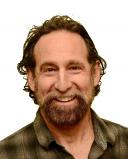Genetics
A Scientific Explanation for the Emergence of Mattering from Matter
Finally, A Scientific Explanation for the Emergence Of Mattering From Matter.
Posted November 1, 2011
Are we getting any closer to a scientific explanation for the emergence of mind from matter? According to cognitive scientists Jerry Fodor, "Nobody has the slightest idea how anything material could be conscious. Nobody even knows what it would be like to have the slightest idea how anything material could be conscious."
Fodor's is a minority position. Cognitive scientists are on the whole optimistic. Most would claim that, thanks to advances in life science, complexity theory and information theory, we are fast approaching a fully materialist account of consciousness.
In his new book Incomplete Nature: How Mind Emerges From Matter (Norton 2011), U.C. Berkeley's Terry Deacon takes up the gauntlet thrown down by Fodor. Deacon argues that the mainstream approach to cognitive science has a lot in common with Zeno's Paradox: In our race to a fully scientific account of consciousness, no matter how finely we dissect neurological processes, or how elaborately we flesh out our algorithmic computational models of complex informational processes, we are getting nowhere nearer to an explanation of consciousness. To Deacon, we need a different approach to the pure physics of consciousness, an approach that parallels the calculus that enabled swift Achilles to ultimately catch the tortoise.
Consciousness entails representation. A thought or behavior represents, or is about environmental conditions in a way that all current materialistic accounts, including complexity theory's approach to "complex adaptive systems" fail to capture.
But consciousness is not the only inherently representational phenomena. All biological fitness is representational. DNA, a polypeptide molecule is not, as Francis Crick averred, the secret to life. The secret to life is the still-elusive answer to a question Deacon addresses: How DNA and other material biological phenomena gets its "aboutness," its ability to represent environmental conditions.
Deacon coins the term "ententional," to encompass the entire range of phenomena that must be explained, everything from the first evolvable function, to human social processes, everything traditionally called intentional but also everything merely functional, fitting and therefore representing its environment with normative (good or bad fit) consequences.
With the spontaneous emergence of ententional phenomena, we find the emergence of all of life's attributes: function, evolution, consequence-organized behavior, self-reproduction (re-presentation), end-directedness, and what is misunderstood as free will, but is actually more like self-assertion, an organism's capacity, through its evolved and learned adaptations, to impose novel physical work on its environment.
To Deacon, the top-down approach to explaining consciousness that have dominated since Descartes' cogito ergo sum, are doomed to failure, and not, as many cognitive scientists argue, because it treats the mystical fantasy of a cogito or self as real when it can't be. Deacon comes not to bury the self but to raise it to the scientific status its ability to do physical work accords it. He aims to show how selves doing real physical work emerge spontaneously at the origin of life on earth or anywhere. To Deacon, knowing "what it would be like to have the slightest idea how anything material could be conscious" requires a naturalistic explanation-not merely an engineer's model, for the phase transition in physical work at the threshold from classical physics (including chemistry and complexity) to evolvability.
To Deacon, a former Harvard neuroscientist responsible for some of the world's first neuronal stem cell research, the devil is not in the reductionist neuronal details, but in updating our understanding of physical work to encompass the kind of novel work done by emergent biological selves.
Boldly broaching topics normally taboo among scientists, Deacon shows step-by-materialist-step how we can cross the threshold from complexity's system dynamics to life's ineluctably representational dynamics. Though some complexity theorists would contend that with their models of self-organization, the threshold is already crossed, Deacon argues that the "self" in self-organization is a self in name only, a bit of homuncular slight of hand performed in our ambivalent quest for an explanation of self that doesn't violate reductionist accounts of causality and work.
An account of physical work that would reconcile ententionality to scientific materialism can be had, Deacon argues, only when we embrace the physical consequence of constraint and absence, concepts as anathema in modern science as the concept of zero was to medieval mathematicians. The calculus that enabled a solution to Zeno's paradox depended upon that zero, and on convergent infinitesimal approximations of it, approximations that are analogous to what we in the sciences understand as material objects.
Materialists sustain an intuition that all phenomena are ultimately traceable to corresponding material objects: Machines have their functional objects. Minds have their functional "modules." Traits have their genes. Thoughts have their neural correlates. Biological adaptations have their "selection pressures" that somehow, like material objects push or pull upon biological lineages to force the adaptations to surface.
Deacon defies this intuition and focuses instead on the emergent dynamics of absence, the way, for example that an "attractor" such as a whirlpool or Benard cell, is not an object but a convergent form produced by "constraint propagation" the nonlinear compounding of constraints that eliminate dynamical variety. A whirlpool's macro-form emerges spontaneously from the ways in which micro-interactions work against each other eliminating, or making absent the variety of alternative forms. The less variety; the more similarity. A form is not an object, as would be suggested by complexity theory's terms "attractor" or "basin of attraction," but rather the absence, elimination or "constraining out" of dynamical variety.
The resulting order appears to defy the second law of thermodynamics, but, in fact, is wholly dependent upon it. Such attractors are far-from-equilibrium dynamical systems, forms that only persist in the presence of energy throughput. When a stream stops flowing the whirlpool ceases to exist.
Such systems are not evolvable because they lack a capacity for form-reproduction and propagation. Though they do not cross the threshold into evolvability they provide the hints Deacon relies upon to show how form-reproduction and propagation can emerge spontaneously when two macro-attractors become the micro-interactions producing a higher-order form. Deacon describes in molecular detail how such a form or "autogen" might emerge, and indeed how from this pre-life form DNA could eventually come to represent its environment for an organismal self.
Deacon's approach offers an unprecedentedly comprehensive attempt at a physics of all meaningful behavior, a "theory of everything" that "does not make it absurd that we exist," a theory that might complete our incomplete theories of consciousness by naturalizing in physics the incompleteness we experience in life's infinitely innovative capacity to produce 'endless forms most beautiful.'
In the past century, quantum physics and general relativity expanded physics in two directions, shrinking the status of classical physics to that of a special case operative under special conditions. Deacon's approach suggests that by understanding the physics of ententional work, the kind of work we living creatures do, we may be on the verge of a third expansion, a physics of meaning that expands our scientific accounts of what is physically possible, to encompass what has heretofore only been physically familiar. Imagine the consequences for science and society of having a physical explanation for functional, meaningful and conscious behavior, no less scientific and accessible than our explanation for lightning.




